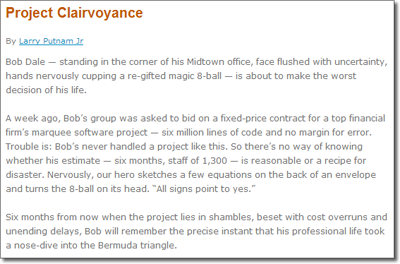Now that it’s officially summer I’ve been feeling the pressure to do some of the home improvement projects that I’ve been putting off since winter. I figured watching one of those cable shows about flipping houses would inspire me to get started. But instead, I started thinking about all the parallels between the show and software projects.
In our training classes, we often make the analogy that software projects are like construction projects. When you start a project, you need to determine its scope. That would include how big it is and how much functionality it will have. You need to determine what resources are available to you. This includes what tools you have to build your project, the number of people available, their skill levels, and your budget. You also need to determine how much time you have to complete this project and the level of quality you’re willing to accept.
This particular episode began as most home improvement shows do. A team of overly ambitious stakeholders with limited construction knowledge decide that they are going to flip a house because it’s all the rage this year. They do some calculations based on the costs of acquiring, renovating, and maintaining the property, which determines that the house needs to sell in 60 days or else they will lose money. Already, we’re looking at a high risk project.
They hire a team of carpenters and contractors to start the work, but during the initial survey of the property they discover that the scope of the project is not possible given the allotted schedule or budget. The team then engages in a series of spirited discussions about which features they can cut without compromising the overall quality of the house. The remainder of the episode is then spent watching the team rush to finish the project on time.



